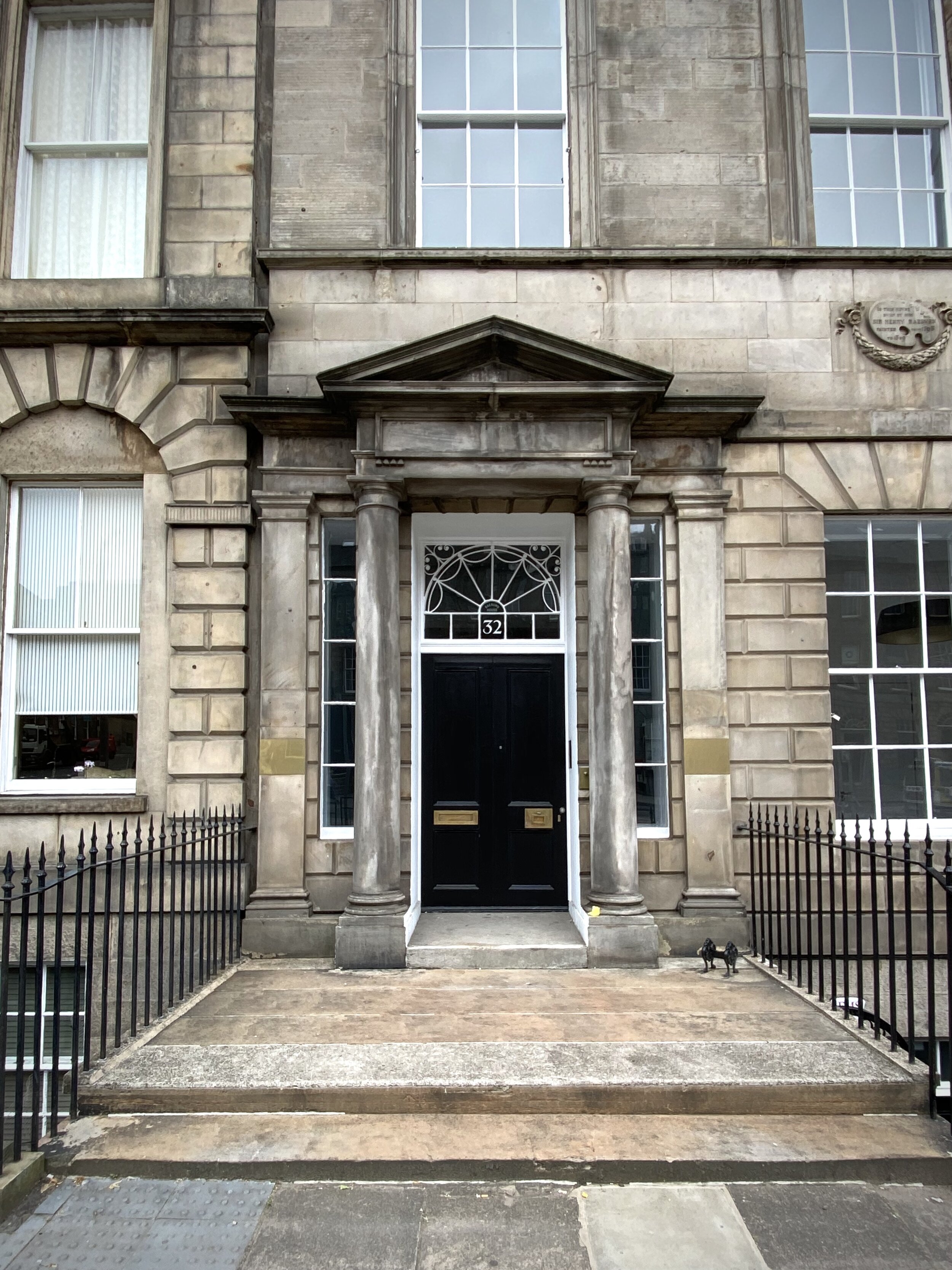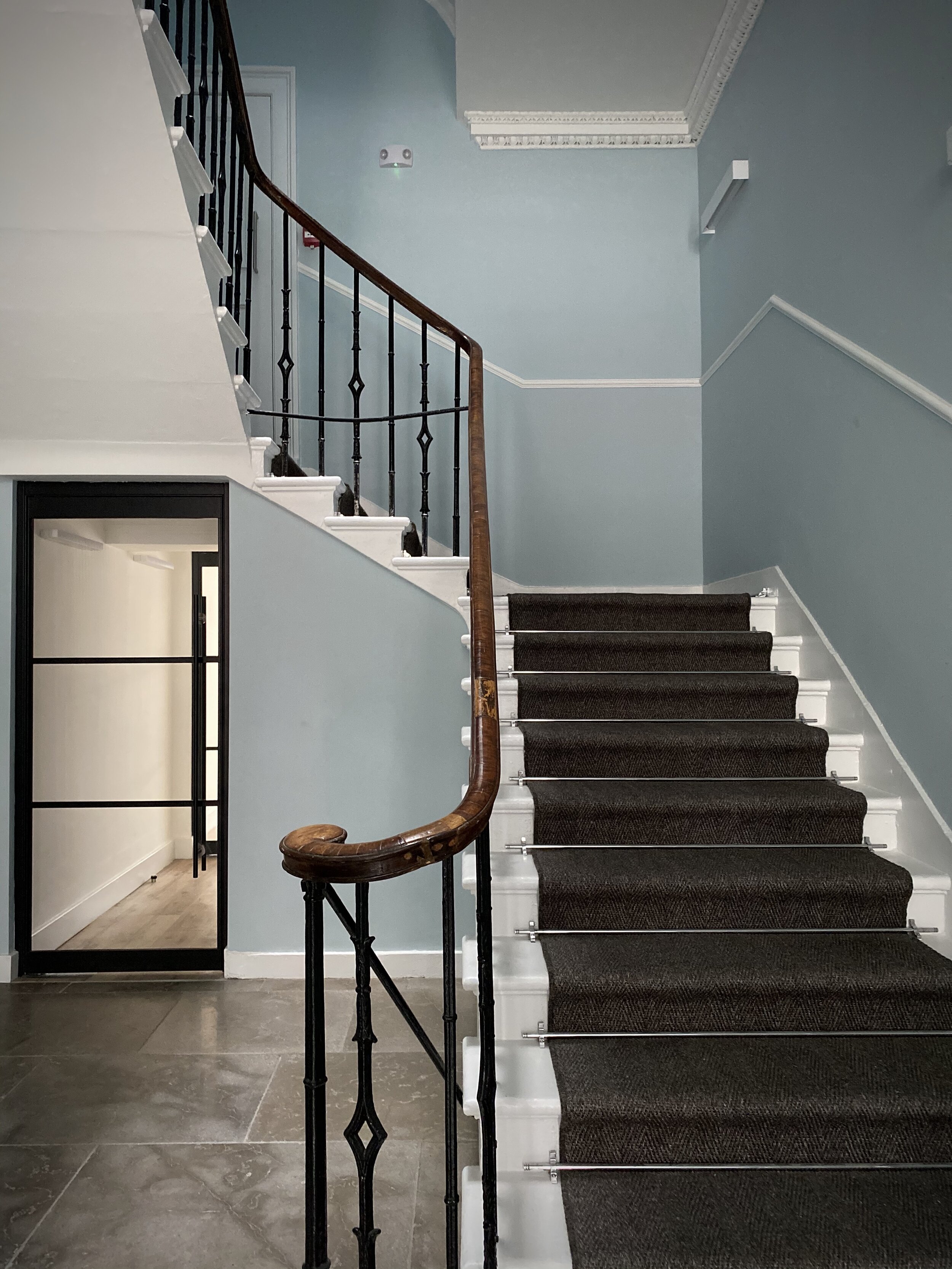‘THIRTY TWO YORK PLACE’
MODERN PORTRAITS IN THE STUDIO OF SIR HENRY RAEBURN
Late one evening some years ago I was exploring online the work of one of Scotland’s greatest portrait painters, Sir Henry Raeburn, the artist responsible for what is probably regarded as the definitive portrait of Sir Walter Scott and perhaps the even more famous ‘Skating Minister’ (Rev Robert Walker on Duddingston Loch).
What must Raeburn’s Edinburgh and his studio have been like, where was the space he created so many of his works and was there any remaining remnants of this time past still in existence today almost 300 years later.
I soon learned that in 1798, shortly after returning from Italy where he had spent the previous two years studying the works of Michelangelo, Raeburn commissioned a new home and studio to be built at 32 York Place in the heart of Edinburgh’s newly created architectural masterpiece, The New Town.
The following morning I headed down to view the property, which I'd also discovered had recently sold at auction.
Noticing the building was still uninhabited I contacted Guy Peploe at The Scottish Gallery, who alongside representing my own work is also the grandson of the great Scottish Colourist SJ Peploe. As fate would have it SJ Peploe also rented the studio at 32 York Place a century after Raeburn’s passing. Shortly after a meeting was arranged between the current owner’s building representative Mhairi Archibald, Guy and myself.
As a point of interest the plaque erected outside the entrance to 32 York Place is slightly incorrect today as it notes Raeburn as having worked there only until 1809. Raeburn lived at 32 York Place until going bankrupt in 1809 however after selling the property and moving to Stockbridge just north of the New Town Raeburn continued to rent his old York Place studio from the new owner until his death in 1823.
The interior of the building had developed and been modernised many times since, however, the fabric of the building and huge four panel high north facing windows looking towards the old Port of Leith and beyond across the Firth of Forth towards Fife is still incredibly impressive. One other gem that’s remained in its original state is the detailed wooden twisting staircase handrail. One wonders ‘who held onto this as they climbed the stairs to sit for this great master?’.
I mentioned how special it would be to create a body of work in such a historical space and if there was scope for me to lease, hire or be allowed to create a portfolio in the studio. Keith, the current owner was keen to see the space being used as it once was intended and kindly (and generously) gave me the keys and permission to use it.
So far so good and all seemed relatively easy. I now simply had to find a subject to create a portfolio on.
Whilst the energy of the building, quality of light and romance of the space was an immediate attraction, any portfolio I was to create had to be more than a vanity project beyond the surface of simply working in such a historical venue.
Days turned to weeks and then months, a year passed, then almost a second year and still I couldn’t arrive at why, what or who I wished to make a portfolio on in this special place.
Then one evening a friend, Lord Philip Brodie, invited me to be his guest at a forthcoming and very formal dinner. I felt incredibly honoured as this annual event was being hosted by the Supreme Courts of Scotland and held at Parliament House.
Left: William Robertson, Lord Robertson by Sir Henry Raeburn; Right: William Baillie, Lord Polkemmet by Sir Henry Raeburn
Some months later at the dinner I found myself seated beside both The Lord President, Lord Carloway, Lord Justice Clerk, Lady Dorrian and soon discovered their interest and passion for the arts. Commenting on the many paintings of past Law Lords and Judges that surrounded us I noted how I found it interesting that little aesthetically had changed in the past couple of hundred or so years though much obviously in law had including the corrected role of females now within the profession. The principals and responsibility was something I began to consider and how the public view these figures and as members of the public how we hope never to stand before them yet must believe and trust in them.
Lord Carloway noted, unknowingly of my hopes of working in Raeburn's studio, that many of these paintings were made by Sir Henry Raeburn and whilst not quite a eureka moment, I now had the foundations to develop the portfolio.





























